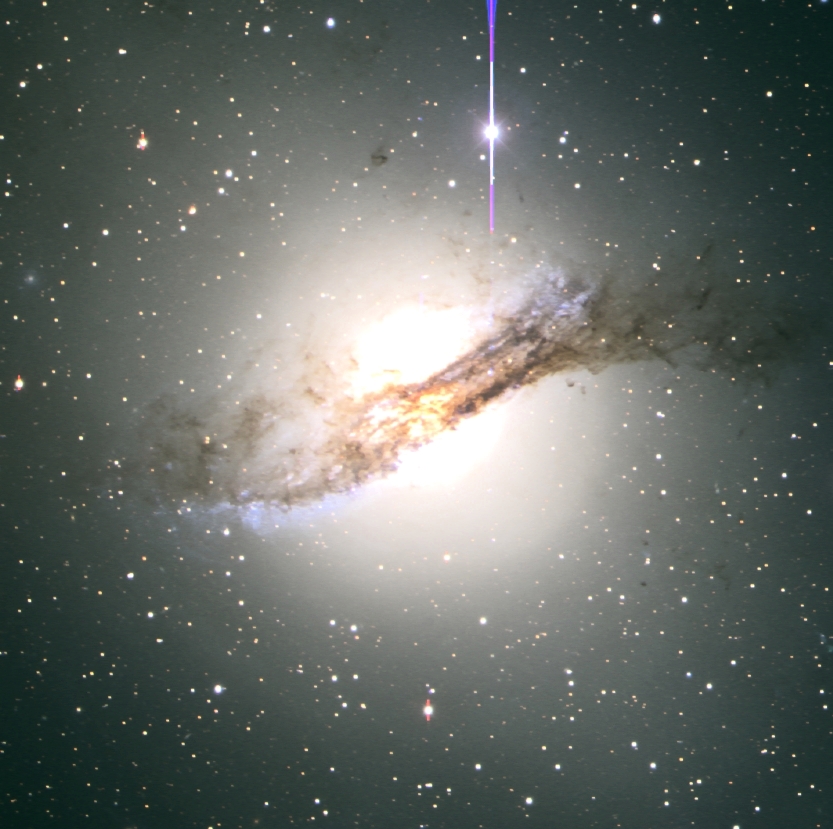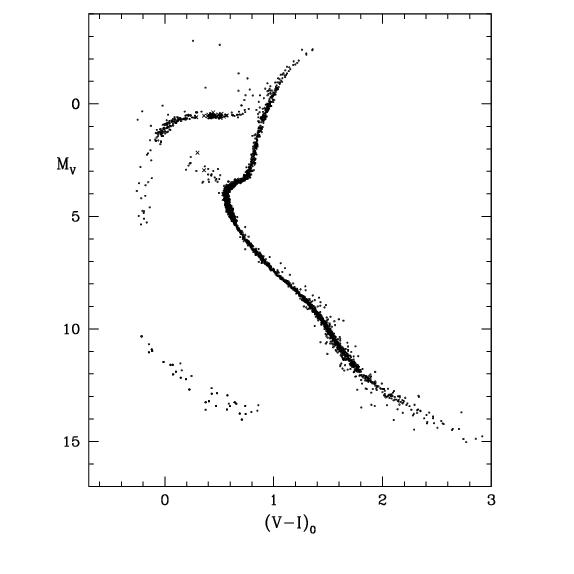


|

|
| Gemini-S GMOS image of the supergiant elliptical NGC 3311, the centrally dominant cD galaxy in the Hydra I cluster. The normal giant elliptical, NGC 3309 at the bottom of the picture, is also in the cluster. Note the thousands of globular clusters around these galaxies, clearly visible by zooming in on the full-scale image. This is a color composite from long exposures in the g' and i' band; the seeing is 0.5 arcsecond. Picture constructed by Elizabeth Wehner and William Harris. |
Color-composite image of the giant starburst galaxy Arp 220, taken with
the Hubble Space Telescope. An analysis of the hundreds of young, massive
star clusters in this galaxy was published in a
paper by Chris Wilson, Bill
Harris, and their colleagues. It was featured as News Release PRC2006-26
from Space Telescope Science Institute.
|

|

|
| The giant elliptical galaxy NGC 1407, about 20 Megaparsecs away. This picture was constructed from ACS/WFC Hubble Space Telescope images in B (blue) and I (near infrared) filters and has been masked to show the large population of globular clusters (small starlike objects) scattered around it. See our first paper on the metallicity distribution of the clusters in this and other supergiant ellipticals. |
Color composite image of NGC 5128 (Centaurus A), the
nearest giant elliptical (4 Megaparsecs away). This was
constructed from CTIO 4-meter images in the Washington
filters C (blue), M (green), and T1 (red). Our images
were used to carry out a photometric
survey of the globular clusters
in this unique galaxy.
|

|

|
| A globular cluster in NGC 5128. This is a composite image constructed from HST/WFPC2 exposures in V and I (see our paper). A few dozen red-giant stars in the cluster are individually visible. |
A template color-magnitude diagram for a "metal-poor"
globular cluster, published in the
HST 10th Anniversary Symposium. This was put together with real data from 6 clusters
including M3, M55, M68, NGC 6397, and NGC 2419.
|